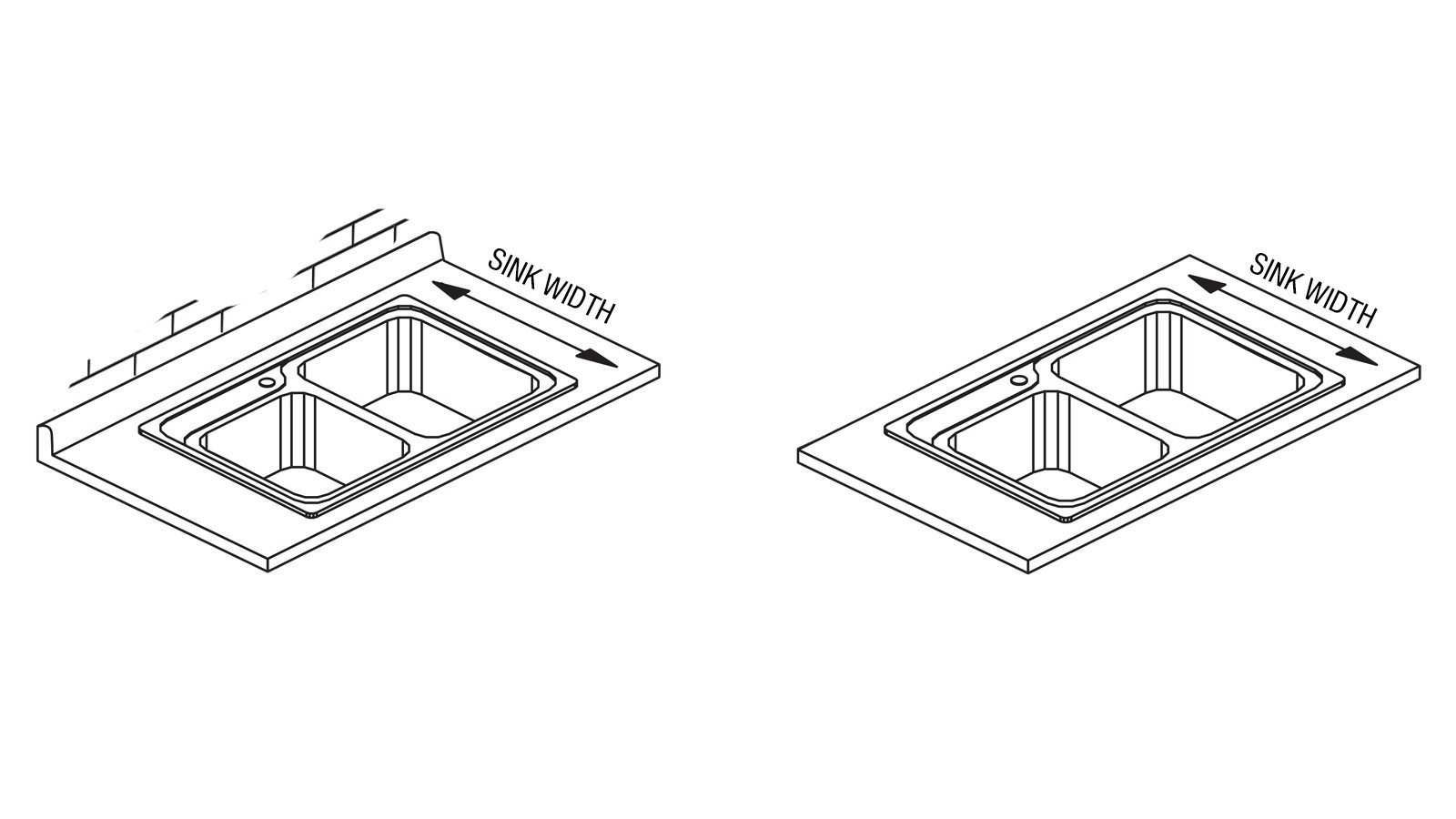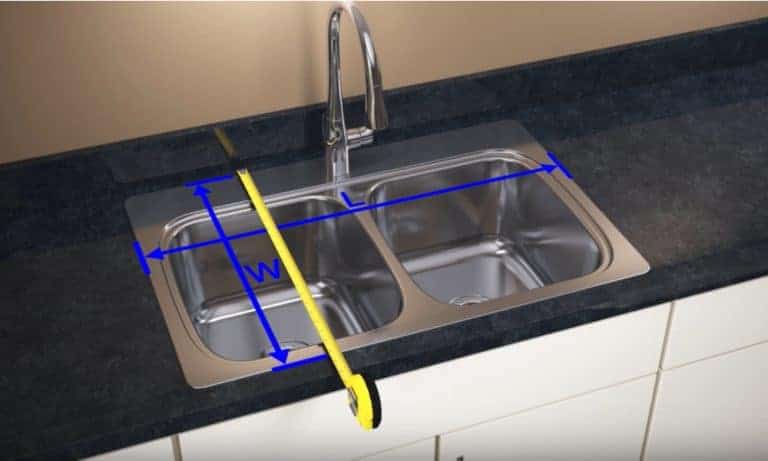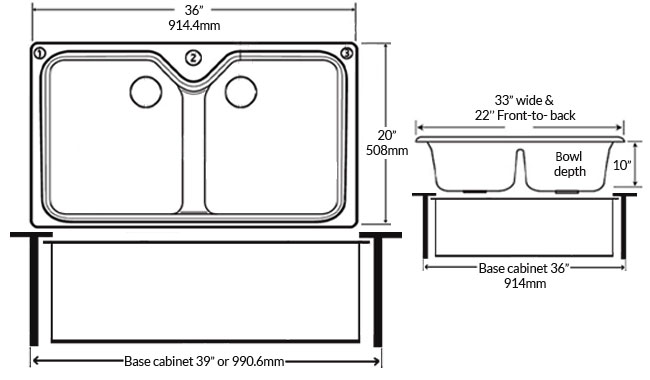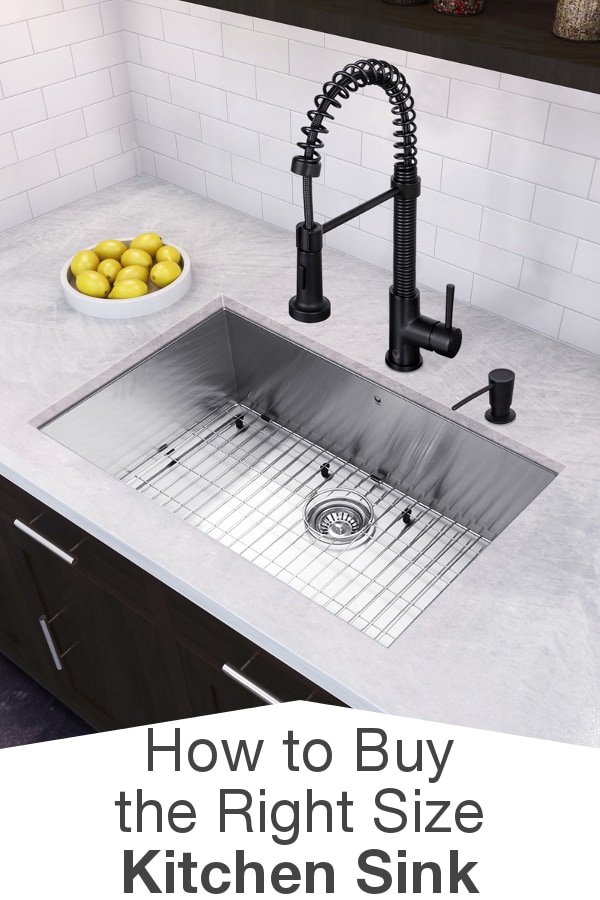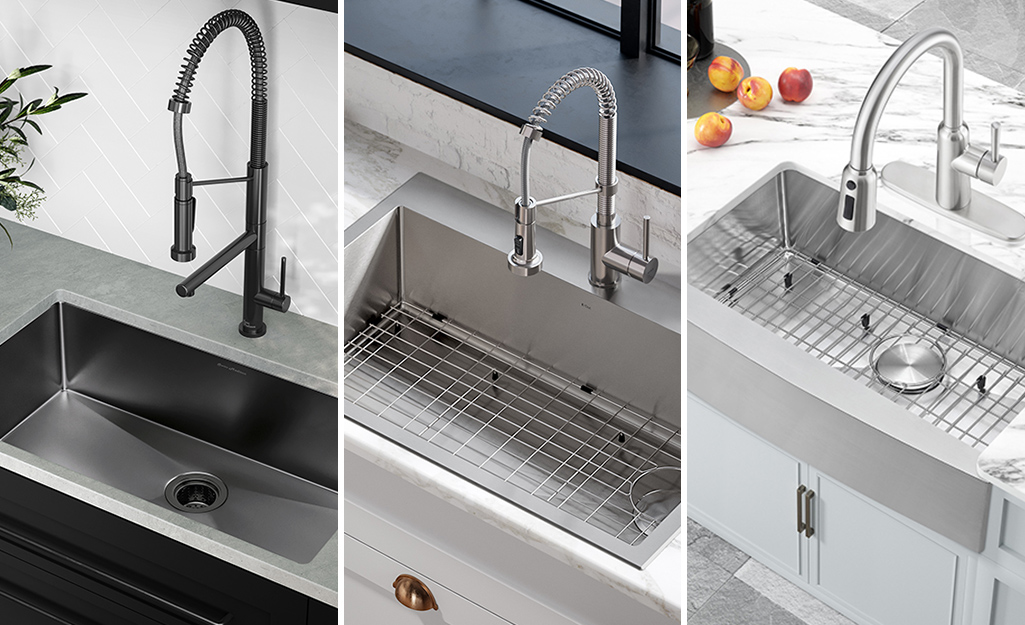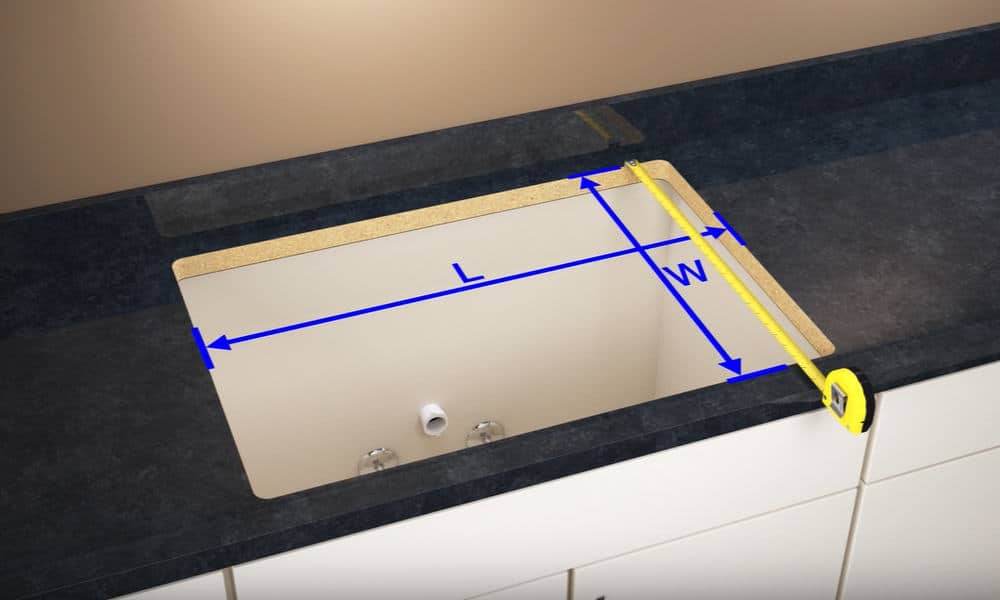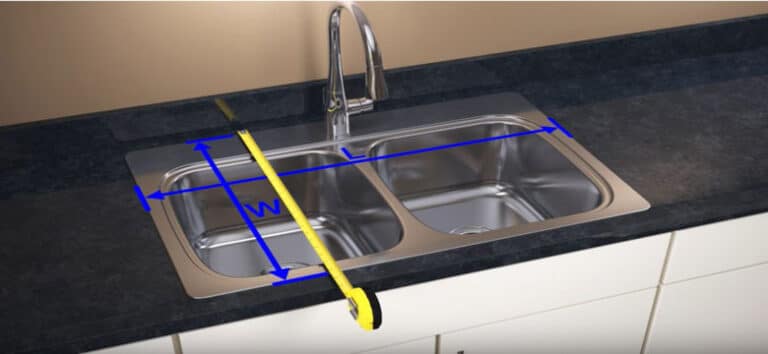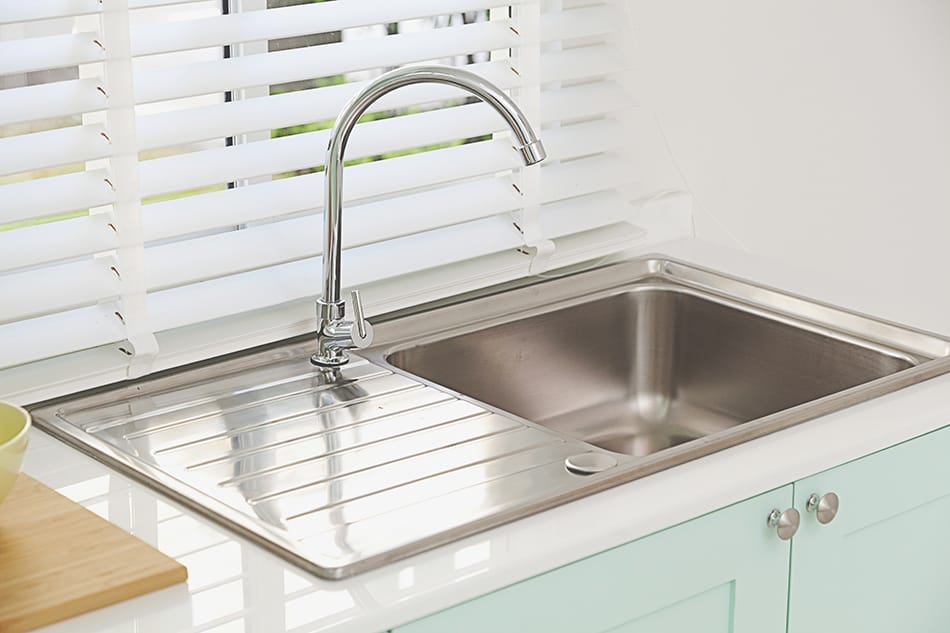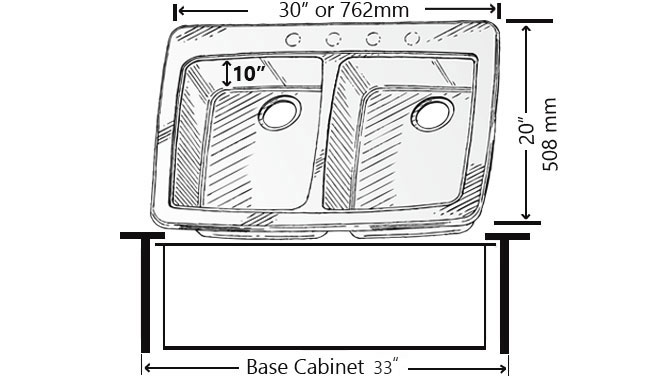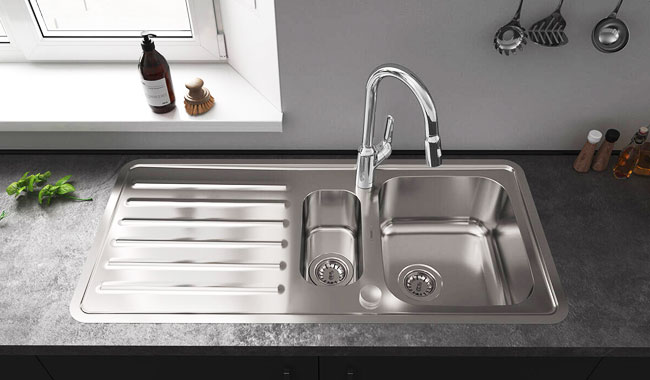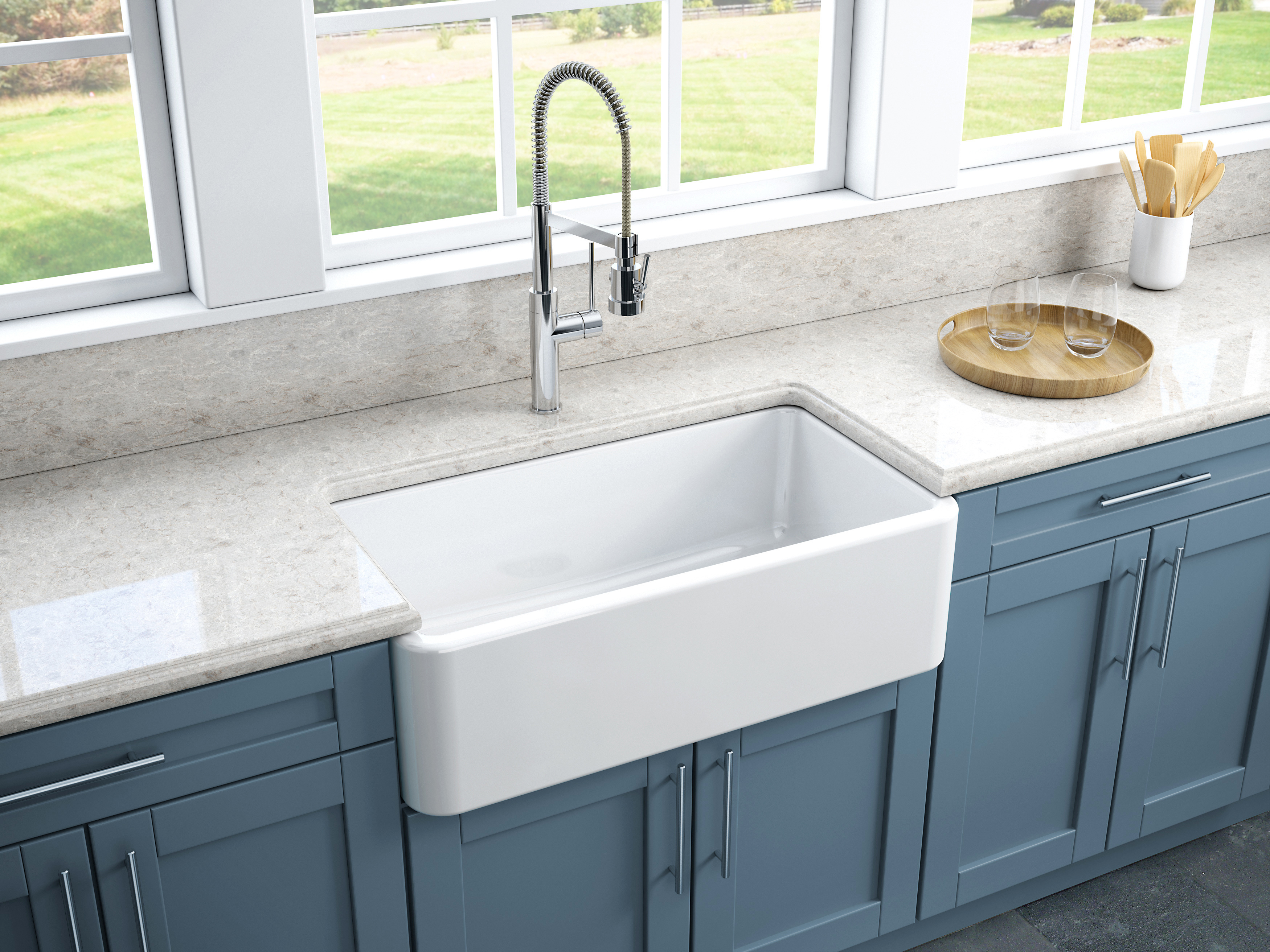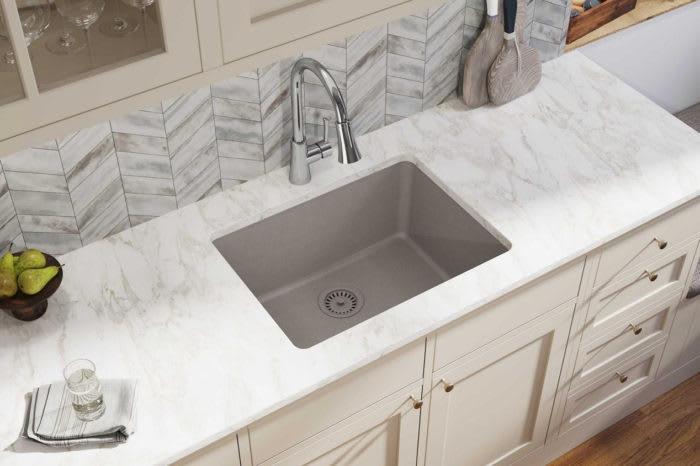When it comes to choosing a kitchen sink, one of the most important factors to consider is the size. A sink that is too small can make daily tasks like dishwashing and food preparation difficult, while a sink that is too big can take up valuable counter space. That's why it's essential to know the standard kitchen sink measurements before making a purchase. In this article, we'll cover everything you need to know about kitchen sink measurements, including how to measure a sink, the different types of sinks and their dimensions, and tips for finding the perfect size for your kitchen.Standard Kitchen Sink Measurements
The first step in choosing the right kitchen sink is knowing how to measure it properly. To measure a sink, you'll need a measuring tape, a pencil, and a piece of paper. Start by measuring the length and width of the sink's interior, from the inside edge on one side to the inside edge on the other side. Then, measure the depth of the sink from the top edge to the bottom. Be sure to measure all dimensions in inches for accuracy. Once you have these measurements, you can use them to compare with the standard kitchen sink measurements and find the best fit for your space.How to Measure a Kitchen Sink
The standard size of a kitchen sink varies depending on the type of sink. For a top-mount or drop-in sink, the standard size ranges from 22 to 33 inches in length and 15 to 22 inches in width. The standard depth for these sinks is 8 inches, but they can go up to 10 inches for larger pots and pans. Undermount sinks have a similar length and width range but tend to be deeper, with a standard depth of 9 to 10 inches. Farmhouse sinks, also known as apron front sinks, come in a variety of sizes, with the most common being 30 inches in length, 20 inches in width, and 10 inches in depth.What is the Standard Size of a Kitchen Sink
If you're in the midst of a kitchen renovation or building a new home, you'll need to measure for a new kitchen sink. The process is the same as measuring a sink for replacement, but you'll also need to consider the size of the cabinet and countertop where the sink will be installed. The sink should fit comfortably within the cabinet and leave enough room for the faucet and any accessories like a soap dispenser or sprayer. It's also important to leave a small amount of space between the sink and backsplash to prevent water from splashing onto the wall.How to Measure for a New Kitchen Sink
If you're replacing an old kitchen sink, you'll need to measure it to ensure the new sink fits properly. Start by removing the old sink and measuring the opening in the countertop. If the opening is too big for the new sink, you may need to make adjustments to the countertop or choose a different size sink. You should also measure the existing sink's dimensions to compare with the new sink's measurements. This will ensure that the new sink fits in the same space and that the plumbing lines up correctly.How to Measure for a Kitchen Sink Replacement
As mentioned earlier, the dimensions of a standard kitchen sink can vary depending on the type of sink. In addition to the length, width, and depth, you may also want to consider the bowl size and the drain location. The bowl size can range from one large bowl to several small bowls for different tasks. The drain location can be centered or offset, depending on your preferences and kitchen layout. Keep in mind that the sink's overall dimensions include any additional features like a backsplash or drainboard.What are the Dimensions of a Standard Kitchen Sink
A drop-in sink, also known as a top-mount or self-rimming sink, is the most common type of kitchen sink. It's called a drop-in because the sink drops into the countertop opening and the top lip or rim rests on the countertop. To measure for a drop-in sink, you'll need to measure the length and width of the sink opening and add an additional inch to each measurement to account for the lip. For example, if the opening is 25 inches long and 21 inches wide, you'll need a sink that measures at least 26 inches long and 22 inches wide.How to Measure for a Drop-In Kitchen Sink
An undermount sink is installed underneath the countertop, creating a seamless look with no visible edges. To measure for an undermount sink, you'll need to measure the interior dimensions of the sink base cabinet and add an additional inch to each measurement to allow for the sink to be mounted. For example, if the cabinet is 30 inches wide and 24 inches deep, you'll need a sink that is at least 31 inches wide and 25 inches deep.How to Measure for an Undermount Kitchen Sink
The average size of a kitchen sink can vary depending on the source. According to a survey by Houzz, the average kitchen sink is 30 inches in length and 22 inches in width. However, the size of the sink can also be influenced by the size of the kitchen and the homeowner's preferences. Some may opt for a larger sink for convenience, while others may choose a smaller sink to maximize counter space.What is the Average Size of a Kitchen Sink
A farmhouse sink is a popular choice for its large basin and rustic aesthetic. To measure for a farmhouse sink, you'll need to measure the cabinet and countertop opening, similar to a drop-in sink. However, farmhouse sinks require additional support, so you'll need to measure the depth of the cabinet to ensure it can accommodate the sink's weight. You'll also need to measure the width and depth of the sink's apron to ensure it fits in the space and aligns with the cabinet doors. In conclusion, knowing the standard kitchen sink measurements and how to measure for a new sink is crucial for finding the perfect fit for your kitchen. Whether you're looking for a top-mount, undermount, or farmhouse sink, following these steps will help you choose the right size for your needs. Remember to also consider the bowl size, drain location, and any additional features to ensure your new sink meets all your requirements. With the right measurements, you can create a functional and stylish kitchen sink that will serve you for years to come.How to Measure for a Farmhouse Kitchen Sink
A Kitchen Sink Measures: The Key to a Functional and Stylish Kitchen

Why the Right Kitchen Sink is Essential
 Your kitchen is the heart of your home, and the sink is the heart of your kitchen. From preparing meals to washing dishes, the sink is one of the most utilized features in any kitchen. But did you know that the right kitchen sink can also add style and personality to your space? That's right, the humble kitchen sink is not just a functional necessity, it's also a design element that can elevate the overall look and feel of your kitchen.
When it comes to choosing the perfect kitchen sink, size matters.
A kitchen sink measures not only in terms of width and depth, but also in terms of functionality and style.
It's important to consider your cooking and cleaning habits, as well as the overall design of your kitchen, when selecting the right sink.
This will ensure that your sink not only fits seamlessly into your space but also meets your specific needs.
Your kitchen is the heart of your home, and the sink is the heart of your kitchen. From preparing meals to washing dishes, the sink is one of the most utilized features in any kitchen. But did you know that the right kitchen sink can also add style and personality to your space? That's right, the humble kitchen sink is not just a functional necessity, it's also a design element that can elevate the overall look and feel of your kitchen.
When it comes to choosing the perfect kitchen sink, size matters.
A kitchen sink measures not only in terms of width and depth, but also in terms of functionality and style.
It's important to consider your cooking and cleaning habits, as well as the overall design of your kitchen, when selecting the right sink.
This will ensure that your sink not only fits seamlessly into your space but also meets your specific needs.
The Right Size for Your Space
 One of the first things to consider when choosing a kitchen sink is the size of your kitchen.
If you have a smaller kitchen, you may want to opt for a smaller sink to maximize counter space. On the other hand, a larger kitchen can accommodate a bigger sink, which can be great for those who do a lot of cooking and cleaning.
The size of your family should also be taken into account.
If you have a large family, a bigger sink may be more practical as it can hold more dishes and make cleanup easier. For smaller households, a smaller sink may suffice.
One of the first things to consider when choosing a kitchen sink is the size of your kitchen.
If you have a smaller kitchen, you may want to opt for a smaller sink to maximize counter space. On the other hand, a larger kitchen can accommodate a bigger sink, which can be great for those who do a lot of cooking and cleaning.
The size of your family should also be taken into account.
If you have a large family, a bigger sink may be more practical as it can hold more dishes and make cleanup easier. For smaller households, a smaller sink may suffice.
The Right Depth for Your Needs
 The depth of your kitchen sink is another important factor to consider.
A shallower sink may be more comfortable for shorter individuals, while a deeper sink can be more convenient for taller individuals as it reduces strain on the back. The depth can also affect the amount of splashing, so if you tend to make a mess while washing dishes, a deeper sink may be the way to go.
The depth of your kitchen sink is another important factor to consider.
A shallower sink may be more comfortable for shorter individuals, while a deeper sink can be more convenient for taller individuals as it reduces strain on the back. The depth can also affect the amount of splashing, so if you tend to make a mess while washing dishes, a deeper sink may be the way to go.
The Right Style for Your Design
 Finally,
the style of your kitchen sink can make a big impact on the overall aesthetic of your kitchen.
From farmhouse to modern, there are various styles to choose from that can complement your kitchen design. Consider the material, color, and shape of the sink to ensure it fits seamlessly with the rest of your kitchen decor.
In conclusion, a kitchen sink measures not just in terms of size, but also in terms of functionality and style.
Choosing the right sink for your space, needs, and design preferences is essential to creating a functional and stylish kitchen.
So the next time you're in the market for a new kitchen sink, make sure to carefully consider these factors to find the perfect fit for your home.
Finally,
the style of your kitchen sink can make a big impact on the overall aesthetic of your kitchen.
From farmhouse to modern, there are various styles to choose from that can complement your kitchen design. Consider the material, color, and shape of the sink to ensure it fits seamlessly with the rest of your kitchen decor.
In conclusion, a kitchen sink measures not just in terms of size, but also in terms of functionality and style.
Choosing the right sink for your space, needs, and design preferences is essential to creating a functional and stylish kitchen.
So the next time you're in the market for a new kitchen sink, make sure to carefully consider these factors to find the perfect fit for your home.










